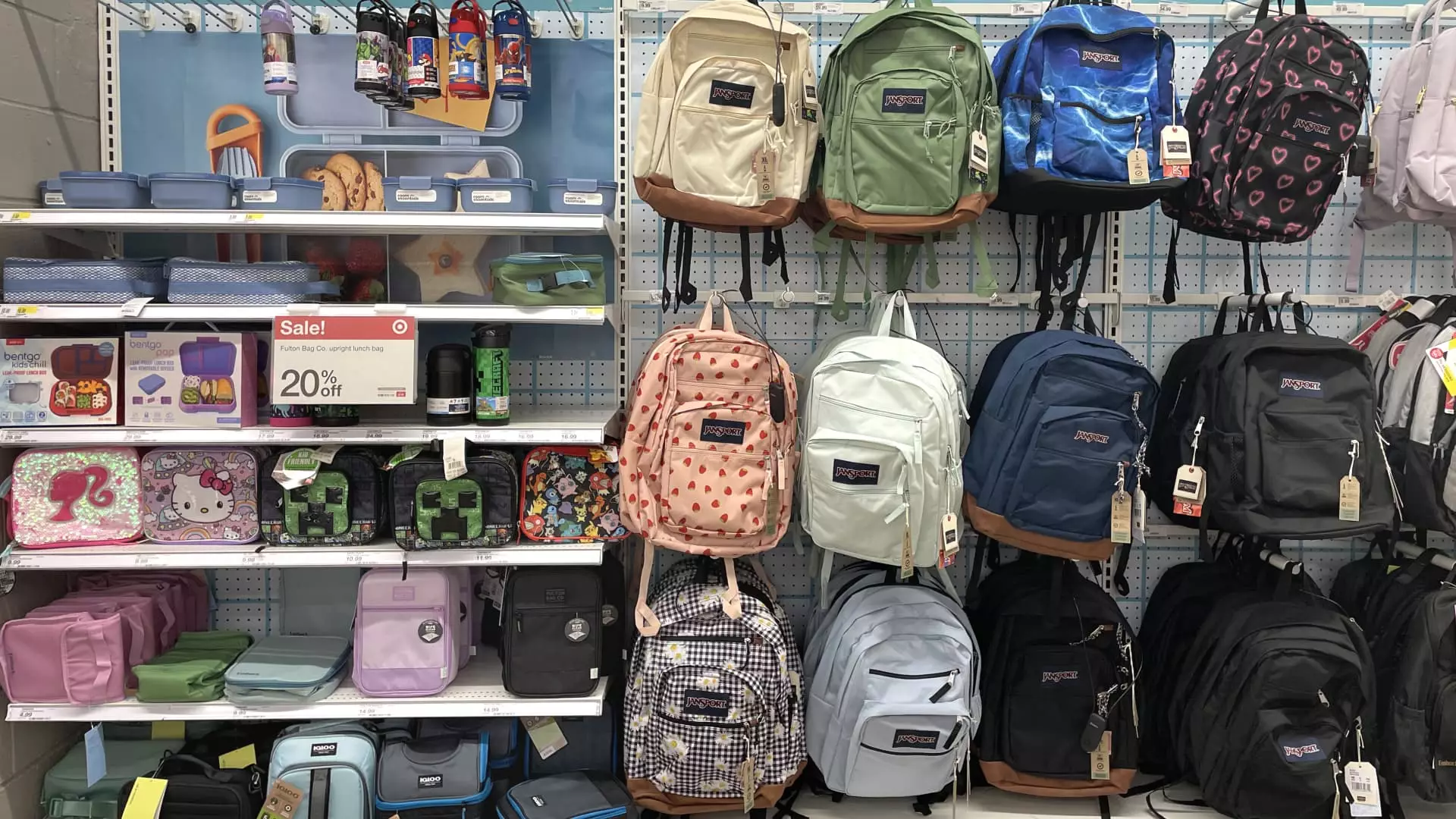As families gear up for another academic year, an unsettling trend is emerging: the financial strain of preparing children for school has reached a breaking point. In a climate marked by economic uncertainty and mounting inflation, parents are struggling not just to afford the essentials but also to maintain their financial stability. This year, the cost of supplies, clothing, and extracurricular activities isn’t just higher; it’s psychologically oppressive, with many feeling cornered into debt or sacrificing other necessities to ensure their children aren’t left behind.
The statistics paint a dire picture. Nearly 20% of parents report that the costs associated with back-to-school shopping are pushing their budgets past breaking point. Alarmingly, nearly 40% admit they simply cannot afford these expenses, and an increasing number are resorting to credit, taking on debt with the hope of bridging the inevitable gap. This is not an isolated problem but a symptom of a broader economic malaise that threatens to undermine the foundational goal of equitable education.
The inflationary pressures are exacerbated by policy decisions, particularly recent tariffs imposed on imported goods. These tariffs, under the guise of protecting local industries, are inadvertently burdening families with artificially inflated prices for essentials such as backpacks, uniforms, and electronics. While the full impact remains partially hidden—delayed by tariff pauses—there is reason to fear that these costs will inevitably hit families hard once the new tariffs are enforced fully. This not only hampers household budgets but risks widening the inequality gap, as lower-income families are less able to absorb these additional costs.
Consumer Shifts and the Mirage of Savings
In response to this mounting pressure, many parents are adjusting their shopping habits—an adaptation that reveals both resilience and vulnerability. The shift toward early shopping, discount stores, and sales indicates a strategic move to mitigate rising expenses. However, these adjustments are reactionary rather than preventative. The fact that 75% of parents are now considering switching to more affordable brands or stores signifies a surrendering of choice in favor of financial survival.
The increased tendency to cut non-essential purchases signals a troubling decline in the quality of educational experiences and childhood enjoyment. Extracurricular activities, which are vital for holistic development, are increasingly viewed as expendable luxuries. A disturbing 53% of parents are willing to incur debt to pay for these activities, asserting that social belonging and success are simply too important to forego, even at the expense of financial security.
What stands out is the paradox of spending reductions—despite inflation pushing prices upward, overall expenditure per child is down slightly from previous years. This suggests families are making hard choices, prioritizing necessities over luxuries and small comforts over long-term financial health. Yet, these choices come with a toll; marginally lower spending could mean less access to quality supplies or extracurricular options, subtly but surely harming the educational prospects of children from less privileged backgrounds.
Tariffs, Inflation, and the Illusion of Control
The political backdrop—a tug-of-war over tariffs, trade policies, and economic sovereignty—undermines these family’s efforts to prepare affordably. The tariffs enacted and paused under the guise of economic liberation serve primarily to confuse and complicate the landscape for consumers. While the tariffs are temporarily halted, the uncertainty they cast leads to cautious, defensive shopping behaviors. Parents anticipate inevitable future price hikes, which prompts early buying—yet this is a band-aid solution against a much larger wound.
The overarching issue is a fragile economy caught between protectionist policies and global market realities. The political administration’s approach, branding tariffs as a means of economic liberation, only adds to the chaos. Instead of fostering stability, these policies reinforce a cycle of uncertainty and hardship, particularly for working families who are already stretched thin. The dangerous misconception is believing that these measures will ultimately serve the common good; rather, they threaten to entrench inequality and hardship further.
Meanwhile, the narrative around “saving” through discount shopping and tax holidays provides only temporary relief. It diverts attention from the root of the problem: the systemic economic policies that perpetuate inflation and job insecurity. True stability requires a comprehensive re-evaluation of fiscal policy—one that prioritizes working families, protects their purchasing power, and invests in sustainable growth.
Personal Sacrifice in an Unjust System
The psychological toll of these economic conditions is profound. Increasingly, parents feel compelled to do whatever it takes—often going into debt—to offer their children not just an education but also a semblance of normalcy and social acceptance. The research indicates that more than half are willing to mortgage their future to ensure their kids can participate fully in school life. This cycle of sacrifice, driven by systemic failures, highlights a societal imbalance: a wealth gap amplified by policies that favor corporations and the wealthy over working families.
This dilemma exposes a moral failure within our political and economic systems. The ideal of equal opportunity becomes a cruel illusion when the cost of education and participation rises beyond the reach of ordinary families. Instead of fostering community resilience and supporting working-class families, current policies seem to bolster corporate profits—even at the expense of children’s futures.
In essence, the ongoing back-to-school shopping crisis isn’t just about dollars and cents. It’s about the fundamental values of fairness, opportunity, and social cohesion. When a society allows economic policies to erode the financial stability of average families, it undermines the very foundation of equitable education and opportunity—a dangerous trajectory that warrants critical examination and urgent reform.

